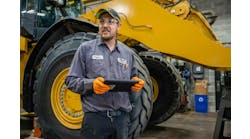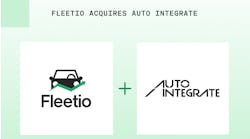With the never-ending pressures for margins, profits and job survival, every fleet maintenance operation has been ordered to cut costs. Cost cutting can be very difficult because such efforts don’t always address the real drivers of costs. Moreover, the endeavors can be too difficult to maintain over time. At times, maintenance managers lack enough insight into their own operations to establish cost cutting programs.
What’s more, cost cutting can often go wrong. Cost cuts are frequently made without considering a maintenance operation’s strategic needs. Often, there are longer-term consequences from “quick” cuts that can affect opportunities to improve operations, say by improving systems or better use of the workforce.
A considerably more effective approach is to lower costs through optimization, becoming more organized, developing an efficiency mindset and establishing business process improvements.
Here, in no particular order, are 40 ways to lower costs in any maintenance operation. All of them may not necessarily work in each maintenance management style or company culture, but they will help lower costs if started, completed and managed.
Each Day
1. At the start of the work day, before going into the office, drive around and tour your yard. Take notice of everything: trailers with burned up axles hubs, damaged tires, accident damage, anything that catches your eyes. Get into the weeds. In other words, dig deep into the details.
2. Tour the shop and practice MBWA (management by walking around). Walk around and visit employees, open up dialog, ask questions, truly listen to what they are saying.
3. Tour the parts department. Here again, communicate with the parts people, look at the parts that have been removed and the core and warranty shelves. Pick up a few invoices, check the dates received and dates ordered. Check stocking levels.
General Beginnings
These steps can help you determine areas ripe for cost reduction.
4. Setup a special visual shelf, in a normal walkway, for all parts removed for inspection or replaced each day. Do the same for cores and warranty removed parts.
5. Setup a parts special order shelf. All special ordered parts should be placed on this shelf. You and your foremen should review this shelf each day. Any parts not installed within 10 day need to be returned. No exceptions.
6. Walk the yard with your managers. Ask them questions, pick their brain, challenge them, ask them about their decisions, tutor and coach them. Leave cell phones in the office so as not to be disturbed. Occasionally, take a technician on a yard walk.
7. Cleanliness. Try and keep your shop looking like an OEM car dealership. A clean, organized workplace saves time and helps boost technician and shop productivity.
8. Organize parts rooms and tire areas for the most efficient parts, tire management and control. (See Fleet Maintenance May 2016, 24 steps to smarter parts management.)
9. Paint the floors with lines and areas of movement. Gloss gray for the shop floor; gloss yellow areas for employee and visitor flow; gloss red lines between gray and yellow areas visualizing a stop sign; gloss green for areas of safety. Gloss white walls and ceilings make for a clean and bright environment. All areas should have adequate light.
10. Check steel and trash dumpsters to get a snapshot of what is being replaced or wasted.
General Mechanical
11. Enhance preventive maintenance (PM) programs by detailing specific PM functions.
12. Pressurize the cooling system and cap to 18 to 20 lbs to check for external leaks or internal coolant leaks. Pressure loss and internal leaks are the first sign and early detection of a failed ERG (Exhaust Gas Recirculation) cooler.
13. Battery maintenance. At a PM inspection, remove each cable from battery terminals and load test each battery. No goop, grease or sprays on the terminals, as this could be a cover-up. Besides, no technician likes to clean battery terminals. Grease gunk all over the terminals only increases their displeasure.
14. Steer axle toe-in. Check this at each PM. Not with an alignment machine, but with a simple toe-in bar. Also perform a rear axle check between the two axles for their being parallel.
15. Slack adjuster stroke. Also, at each PM, check the slack adjuster stroke and note this on the PM sheet. No adjusting of automatic slack adjusters (ASA) at a PM or any another time. ASAs “work” or they are worn out.
16. Grease with the best grease available for the vehicle application. Raise the front axle off the ground and lower to the ground for proper greasing procedures. Check to see what is going on in your shop with greasing procedures.
17. Air filters. These should only be replaced because of restriction, not because of any writing on the filter housing or filter as to when to be changed. Change at 18”, not at each PM and only by restriction.
Filter canisters today are smaller and have shorter life by design. Buy all filters at the right price and be careful of marketing product sales pitches alluding to a better, longer lasting filter.
18. Fuel filters. These should be changed at each PM. Do not change the microns rating of the filter. Use the biggest fuel water separator filter available, if you have a choice.
19. No fifth wheel kingpin looseness checks at a PM. Rather, inspect for mounting and cracks. Have the driver alert you of looseness using the DVIR (Driver Vehicle Inspection Report). The foremen should be the one to determine if a kingpin jaw is worn out, not a technician.
20. 100 percent accountability of labor. Technicians expect to get paid for every minute they work, so they should be accountable for all their time. This will make them more productive.
21. A goal for 95 percent of chargeable parts posting. Do not go broke for the last 5 percent.
22. Parts inventory. Only have high usage parts on hand. No emotional overstocking. Do cycle counting weekly on high usage parts. Monthly or quarterly inventory counting is too labor intensive.
23. One coolant, one color for all vehicles to keep things it simple. Test coolant at each PM. Extended life coolant lasts for a longer time through replenishing additives. Contact your coolant representative for guidance.
24. Maximize oil drain intervals with no shop visits between PMs to “grease” the truck. Every time a truck is in the shop for unscheduled work, you spend money.
25. Oil analysis. Evaluate the value and expense of doing this at each PM.
26. Top usage parts. Ensure the quality and consistency of the most frequently used parts and purchase them at the “best” price. Price does not always make for the best part option for lowering cost.
27. Five-minute rule. Any maintenance employee that cannot determine a repair decision within five minutes must seek advice and consult with a superior.
28. Cell phones and social media. There has to be an understanding with shop employees that there is a place and time for exercising personal use of social media and cell phones. The cost of unproductive time is $1 per minute. That could be doubled because of the productive loss of hours.
29. Brakes. Proper repair and replacement may involve worn camshafts, slack adjusters, bushings, weak springs, marginal drums and pads and rotors. These repairs need to be handled with safety in mind, as well for maximizing performance, life and uptime.
The question always has to be asked: Why do I not get the same mileage as the original OEM brake life? Half of a repair can feed half the potential life.
30. PM training. This is perhaps more important than any other training. However, it takes additional training as well to have a sound PM program.
31. Repair it right the first time. Manage the repair and not the SRT (standard repair time). Proper tools and diagnosis saves time and lowers cost.
32. Use pre-set regulators on tire cages for unattended airing of tires to save time and labor.
33. Understand the terms of all warranties so you know what you pay for and what you get.
34. If you have vehicles in OEM dealer shops, be in contact with them every day to stay on top of any repairs and maintenance. If they are local, pay a visit to the shop to see for yourself what is going on with your equipment.
35. Do everything possible to avoid an out of service event. For each event, drill down to learn why it occurred and what can be done to avoid it going forward.
36. Do not procrastinate on out-of-service repair decisions. Have a plan in place and get the matter resolved as soon as possible.
Tires
37. Look at each tire removed. Check tread depths, wear patterns, tire age, rim rust, aluminum corrosion, etc.
38. Rack management. Study the tire inventory and see what you have in rack stock. Is it organized? Do you have the right tires in the rack? Are there more tires than will fit in the racks?
A best practice is to have no more tires than will fit in a rack. Extra tires get in the way and large inventories can be costly. If more tires are needed, accelerate deliveries from your tire suppliers.
Another best practice is to have a place for all tires that need to be returned, as well as a place for all tires that need to be sent out for repair or recap.
Forget about doing daily and weekly inventories as these are a waste of productive time.
39. Change tires and replace them at PM time for both power units and trailers. If the tires cannot make it to the next PM, change them in the shop, not on the road.
It is about minimizing road calls and enroute tire replacements. Do not let vehicle utilization be compromised by running tires too thin. This is the same theory for brakes and drums.
As noted previously, keep the vehicles productive and out of shops and truck stops for unscheduled maintenance and repair. The name of the game is uptime.
40. Scrap analysis. Each and every tire needs to be inspected before disposal. Evaluate your casing management. If the casing life is set for seven years, it could be that at seven-and-a-half years there may still be some additional life left. Such decisions need to be determined from inspection, as well as using tire usage date.
Chose the right tire for the fleet and application. Get support from a strong local tire dealer.
In Sum
Clearly, this is not a complete list. There are so many simple things that can be done to lower cost in any vehicle maintenance operation. The key is to take a hard look at your operation and determine where changes and adjustment can increase efficiencies and productivity.
At the same time, look for ways to improve on vehicle maintenance with the goal being to reduce road calls, reworks and unnecessary and unscheduled shop visits. These all involve downtime, in addition to unplanned labor and parts costs.
The parts department is the police of parts replacement and should always be challenging the replacement of parts. There are many parts replacement that are not needed.
We have become a replacement society of parts changers as opposed to properly diagnosing to determine what parts truly need to be replaced. But, it is unwise to spend hours to save pennies.
A final thought: Manage all the details of your maintenance operation each and every day, and operate as if you are on the threshold of “Chapter 11”. Measuring and evaluating data is okay, but when the costs hit the reports, it is too late and the damage has been done.
Practice MBWA. Look for ways to eliminate waste and to reduce costs. They will be right in front of your eyes, provided you look for them carefully enough.



